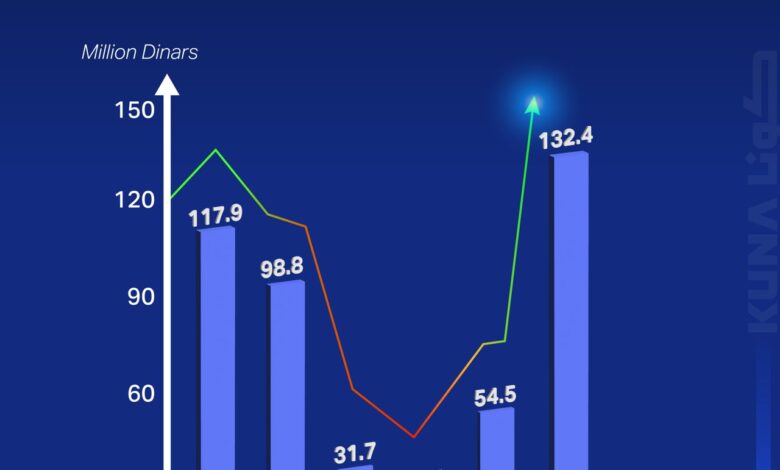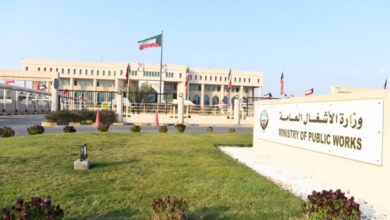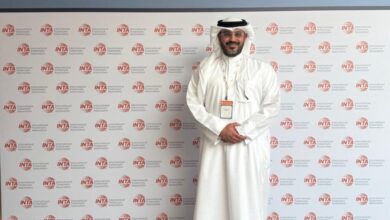Kuwait’s development spending in Q1 2025–2026 hits five-year high
.. . Reflects strong push for infrastructure and economic diversification

Government spending on development projects by the end of the first quarter of the 2025–2026 annual development plan reached its highest level in five years, marking a significant increase compared to corresponding periods in previous plans. The rise reflects the government’s growing commitment to accelerating project implementation and strengthening development performance across sectors.
According to a report issued by the Secretariat General of the Supreme Council for Planning and Development, total development spending by the end of the first quarter amounted to KD 132.4 million (USD 433.4 million) — an 11 percent increase over the KD 117.9 million (USD 386.5 million) recorded during the same period in 2020–2021. This figure also far exceeded previous years’ levels, which stood at KD 54.5 million in 2024–2025, KD 22.7 million in 2023–2024, KD 31.7 million in 2022–2023, and KD 98.8 million in 2021–2022.
The report revealed that the spending ratio reached 10 percent of total planned allocations — 5.1 percent higher than last year — with infrastructure projects taking the lead. Expenditures on building a solid infrastructure accounted for 11 percent of total spending, followed by programs aimed at developing environmentally sustainable living areas at 5.5 percent.
The current annual plan includes 141 projects under nine main programs, consisting of 124 ongoing and 17 new ventures. The largest share, 38 projects, falls under the infrastructure development program. The plan involves 42 government entities, all operating under a unified governance system to ensure accountability, measurable outcomes, and alignment with Kuwait’s Vision 2035 objective of ranking among the world’s top 35 nations.
Compared with earlier plans, the 2025–2026 scheme adopts more precise criteria for selecting initiatives, identifying necessary legislative frameworks, and improving governance mechanisms to monitor progress and ensure effective implementation.
The capital expenditure budget for 2025–2026 includes 69 new projects and 373 ongoing ventures, such as the expansion of the Umm Al-Haiman wastewater treatment plant, completion of the new T2 terminal at Kuwait International Airport by 2027, and the first phase of Mubarak Al-Kabeer Port by 2028. Ongoing infrastructure works in transportation and ports are expected to enhance Kuwait’s competitiveness, stimulate trade, and generate new job opportunities.
Independent institutions also play a key role, with 18 projects worth KD 250 million (USD 819.6 million) focusing on sustainable urban development and public–private partnerships, particularly in the new cities of South Sabah Al-Ahmad, Al-Mutlaa, and South Abdullah Al-Mubarak.
In a statement outlining the government’s fiscal outlook for 2025–2026, the Acting Minister of Finance and Minister of State for Economic Affairs and Investment, Dr. Sabeeh Al-Mukhaizeem, emphasized prioritizing health, education, and housing projects, as well as expanding strategic partnerships through treaties and memoranda of understanding.
He reaffirmed Kuwait’s commitment to achieving sustainable development goals, enhancing economic diversification, and reducing dependence on oil revenues. Recent government committee meetings have focused on improving expenditure efficiency, diversifying income sources, and enhancing inter-agency coordination to expedite project execution.
The Cabinet’s recent sessions underscored the success of Kuwait’s economic openness policy, aimed at transforming the country into a financial and commercial hub while creating sustainable employment opportunities.
Dr. Al-Mukhaizeem also presented the framework of the Financial Balance Program, outlining ongoing fiscal and economic reforms designed to strengthen financial stability and expand non-oil revenues. He noted that non-oil income is expected to grow significantly in 2025–2026, supported by initiatives such as the Domestic Minimum Top-Up Tax (DMTT) introduced on January 1.
Meanwhile, Kuwait continues to maintain its strong sovereign credit rating with a stable outlook, supported by solid fiscal reserves and robust economic fundamentals — key pillars that underpin the country’s long-term financial and development resilience.
Follow The Times Kuwait on
X, Instagram and Facebook for the latest news updates













